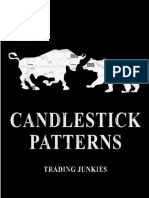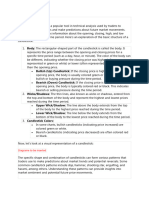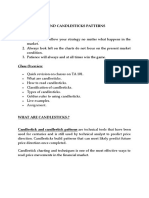Basic Candlestick Patterns - A Guide
Basic Candlestick Patterns - Quick Guide:
Candlestick patterns help traders predict future price movements based on historical patterns.
1. Bullish Engulfing:
- A large green candle engulfs the previous small red candle.
- Indicates a potential reversal from a downtrend to an uptrend.
- Shows strong buying pressure.
2. Bearish Engulfing:
- A large red candle engulfs the previous small green candle.
- Indicates a potential reversal from an uptrend to a downtrend.
- Shows strong selling pressure.
3. Hammer:
- A small body near the top of the candle with a long lower wick.
- Often appears after a downtrend, signaling a potential reversal to the upside.
- Indicates that buyers have started to push the price up after a period of selling.
4. Shooting Star:
- A small body near the bottom of the candle with a long upper wick.
- Often appears after an uptrend, signaling a potential reversal to the downside.
- Indicates that sellers are starting to take control after an initial surge by buyers.
5. Doji:
- A candlestick with a very small body, where the open and close prices are very close.
�- Represents market indecision, where neither buyers nor sellers are in control.
- A Doji at the top of an uptrend or bottom of a downtrend could signal a potential reversal.
6. Morning Star:
- A three-candle pattern: a long red candle, followed by a small body candle (red or green), and a
long green candle.
- Indicates a reversal from a downtrend to an uptrend.
- Strong buying pressure follows a period of selling.
7. Evening Star:
- A three-candle pattern: a long green candle, followed by a small body candle (red or green), and a
long red candle.
- Indicates a reversal from an uptrend to a downtrend.
- Strong selling pressure follows a period of buying.
Conclusion:
Understanding basic candlestick patterns can help you identify potential market reversals and
trends, aiding in making better trading decisions.

























































